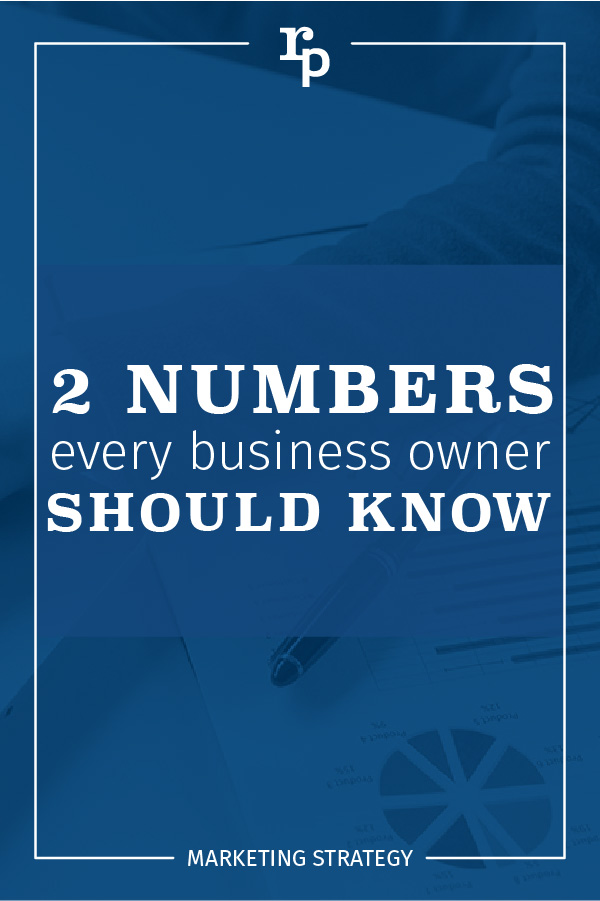2 Numbers Every Business Owner Should Know
Editor’s Note. I wrote this blog on the 2 numbers every business owner should know back in 2014, but it is as valid today as it was back then.
It isn’t practical to drive looking only in the rear view mirror. Even if you think you know what is in front of you, sooner or later you will run into something you didn’t expect. When you run your business simply by reviewing your bottom line, you are driving using your rear view mirror. Why? Because the monthly revenue number is a lagging indicator, telling you how well you have done. There is no preview of the months to come.
Don’t get me wrong, I think it is important to look at your P&L as a score sheet, but if you want a road map, you need to pay attention to the leading indicators. These numbers which tell you months in advance if you are heading in the rocky direction, or if a course correction is needed.
Closing Rate
This simple number drives your marketing budget. The better your closing rate, the fewer leads you need and the less you need to spend on advertising. So how good are you? How often do you walk away with a sale after a phone call or face-to-face meeting? Do you get the sale 10, 20 or 50% of the time?
If you are running a B2B company or service business it is relatively easy to calculate your closing rate. Simply review the last 25 proposals or serious sales conversations you had. What percentage became customer? Once you know this number, you can create plans for improvement. For retail products you can evaluate you online shopping cart abandon rate. For in store purchases it is trickier, but can be done by studying the total number of transactions at a retail outlet and the number of times your product is purchased.
How do you improve your closing rate? Better sales skills or better prospects. I recommend a bit of both. Inbound marketing and other tools help prepare prospects, educating and informing them so they come to the table ready for a real sales conversation. And sales training will help you close more of the opportunities which come your way. For retail outlets improving your point of sale signage may be required.
Of course, you could ignore your closing rate completely and just spend more money on advertising, but that is kind of putting the pedal to the metal, and driving with a blindfold on.
AR/AP Ratio
No, this isn’t some variation on the membership in some senior organization. AR stands for Accounts Receivable and AP stands for Accounts Payable. This ratio will tell you a glance if you are heading for a cash flow issue. It’s a variation of the standard accounting “Quick Ratio,” but simpler to calculate at a glance. Just divide your AR– the money due to you from customers–by your AP, the total short-term liabilities like credit cards and outstanding bills. If you have long-term loans, only include the monthly payment in this total.
The ratio will vary by business, but several rules of thumb:
- A ratio of 1:1 or less is risky. You can pay all your current bills if everyone who owes you money pays on time. There is no room for extra expenses or slow-paying clients. I hope you have some large cash reserves, or you are going to be borrowing to keep the business afloat in the short term.
- 2:1 is typically a sign of a healthy business.
- 3:1 you may even have resources to bank a little bit for a rainy day or invest in the business.
Things you can do to improve your ratio:
- Sell more. That is the easy answer, but in most cases a few sales can help.
- Cut expenses. Taking your team out to lunch frequently, buying lots of fancy new computers? Dial it back until your ratio gets back in line.
- Get a line of credit and refinance those credit cards with a lower interest rate, long-term loan.
Other Numbers
There are lots of other numbers you can use to measure various elements in your business. Trust me, I am a numbers geek, and I can give you pages of them. But the truth is, you have a business to run, so start with these two. Once you have a handle on them, you can look at others.
Don’t forget about your sales figure. That is important too. It is fine to look back to see where you have been, but the closing rate and AR/AP ratio will help you look forward to see the road ahead.
They Are 2 Numbers Every Business Owner Should Know
looking for free resources?
Discover workbooks, checklists, quizzes and more in our Digital Toolbox

Rebrand with Design Thinking
What is design thinking and why is it so popular? Well, it's a process used to redefine problems...
Canning Cookies, Creating Cohorts: Google’s Advertising Shift, Explained
The devs over at Alphabet are not just trying to bolster their profit; they’re trying to make something that could be problematic better and more secure.
4 Tips for an Effective Virtual Onboarding Agenda
Virtual onboarding is here to stay As it becomes safe to return to the workplace in a...
Investing in Business Recovery
Last week, Lorraine wrote about the importance in investing in business recovery. That raises the...
